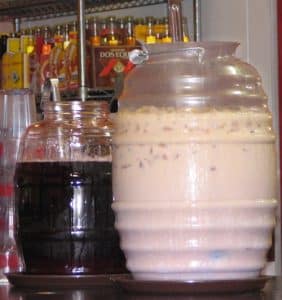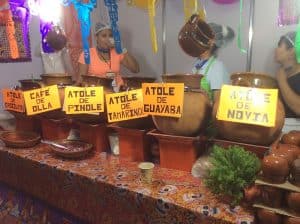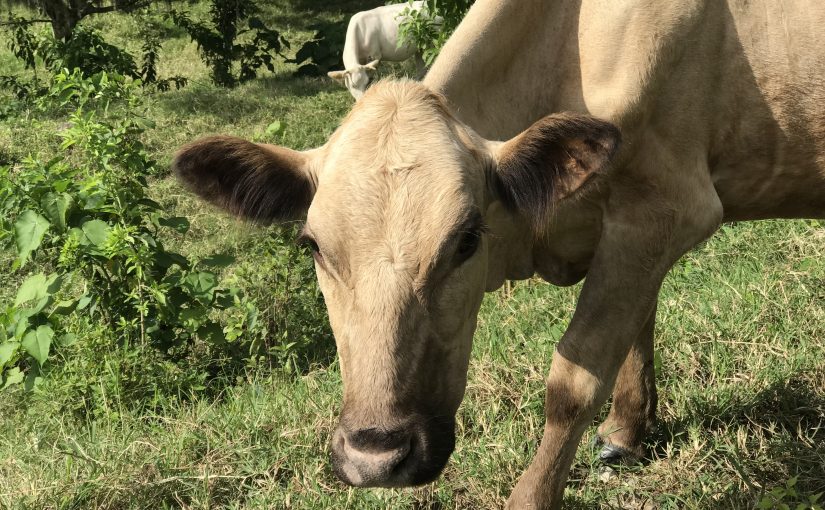In this lesson we will learn the particles /xi/ and /ma/ marking imperative expressions. Verb roots of classes 1, 2, and 4 are not modified by the imperative forms, but class 3 verbs, which end in “-ia” or “-oa”, lose their last vowel.
Note: The images in this lesson were created by the following people:
CC BY Sabina y Catalina Cruz
CC BY ManekiNeko
CC BY-SA Sxmuelfernandez
Rufina: Piyali.
Martha huan Angela: Piyali.
Rufina: ¿Tlen inquinequih inquicuāzceh?
Martha: Quēna, tohhuantin ticnequih ticcuāzceh chīltlaxcalli huan etlātzoyo9ntli.
Rufina: Cualtitoc. Huan ¿tlen tēntzcayōtl inquinequizceh?
Martha: Ah, tohhuantin ticnequih cē nieveh.
Rufina: Cualli, nopa tlahuel ahhuiac.
Angela: Quena, tlazcāmati.
Rufina: Axtlen.
The two imperative particles “xi-” and “ma” have different syntax. The particle “xi-” replaces the agent marker. It substitutes the second person singular and plural (ti / in) markers.
“Ma” is not a bound suffix. When used, the verb keeps its subject marker.
Number in imperative verbs is marked by the suffix “ø” for the singular and “–cān” in the plural.
Ma ni – (verbal base) – ø
Xi – (verbal base) – ø
Ma ø – (verbal base) – ø
Ma ti – (verbal base) – can
Xi – (verbal base) – can
Ma ø – (verbal base) – can
Nimatzin tiittazceh tlamanēxtilli tlen tlachīhualiztli (Next we will see examples of imperative verbs)
/moquētza/ “to sit”
Ma quīza “She/he goes out!”
Ma tiquīzacān “We go out!”
Ma quīzacān “They go out!”
Class 3 verbs aend in “-ia” or “-oa.” They delete their last vowel when they are conjugated in the imperative, that is, they lose their final “-a”. For example:
Ximālti “Bathe!”
Ma malti “Let her/him bathe!”
Ximālticān “Bathe, you all!”

zantiahātl “watermelon juice”

Tequitl cē (Activity One): Conjugate the following verbs with the imperatives “xi-” and “ma”
chōca
itta
chīhua
cuā
cui
Tequitl ōme (Activity Two): With the same verbs from exercise 1, write two sentences using the particles “xi-” and “ma”.
1.
2.
Tequitl ēyi (Activity Three): Listen to the following paragraph about food preparations and then answer the following questions
Chiltlacualli
| Achtohui ticmānazceh ātl pan cē chachapalli. Noque totōniya ticpahpācazceh huan tictehtequizceh piyonacatl. Teipantictēmazceh pan chachapalli huan tictēmilizceh achi iztātl ma īcā molōni. Ticyōlquīxtizceh chīlli huan ticmolõnizceh pan ceyoc pilchachapaltzin yāz chīlli anchoh, chīlli huahiyoh huan huācchīlli. Quēmman eltocca nochi, tictēmilizceh cē quezqui tomatl. Naman iucci piyo huan chīlli. Nouhquiya ticcualtlālizceh arroz.
Achtohui moyēctiz huan ticpahpācazceh. Quēmman eltocca, mocacatzoz īcā ceboiz. Teipan tictēquilizceh tomatlahuātzantli, iztātl huan achiyoc ātl tlen īcā iucciz. Tictemohuizceh chīlli huan tichuātzanizceh. Quēmmantitlamizceh tichuātzaniah, tictēcazceh pan chachapalli cāmpa eltoc piyonacatl. Tictēmilizceh iztātl huan tlacualpahmeh: cominaz, calavoz, pimientah, ahoz huan ticmachiltiyazceh tlan cualtitocca. Teipan titlacuāzceh. |
| 1. ¿Queniuhqui itocah tlacualli tlen ica zaniloah huahcapan? |
| 2. ¿Tlen quimanah achtohui pan chachapalli? |
| 3. ¿Tlen quitemiliah piyo tlen eltoc pan chachapalli para ma ica moloni? |
| 4. ¿Queniuhqui itocah chilli tlen nouhquiya momolonia? |
| 5. ¿Tlen tlacualpahmeh motēmilia chīltlacualli? |
Tequitl nahui (Activity Four): Listen to the following paragraph about food and then answer the following questions

|
Pan cequin pilaltepētzitzin axcanah nochi oncah tlamantli tlen motequihuia pan calli. Ticpōhuazceh cē tlanehnehuilli tlen pilaltepetzin tlen Tecomate. Pan ne pilaltepētzin tiquihtozceh axcanah oncah cāmpa monāmaca tlacualli, ni pampa nochi mācēhualmeh tlacualchīhuah zan ininchān. Inihhuantin axcanah quinequih huan axcanah quiāmatih zan quicōhuazceh tlacualli cāmpa quināmacah. Nouhquiya inihhuantin axcanah quichihchīhuah tlacualli tlen āltepētl huan axcanah mocuā maz cuatlacquetl. |
| 1. ¿Tlen Ticcuahqui yāhuatzinco? |
| 2. ¿Tlen ticcuahqui tlahcotōna? |
| 3. ¿Tlen ticcuahqui tlayōhua? |
| 4. ¿Tlen ticcuahqui yālhuaya? |
| 5. ¿Quēniuhqui ticcualtlalihqui tlen ticchīuhqui? |

